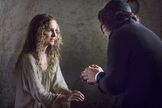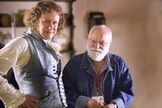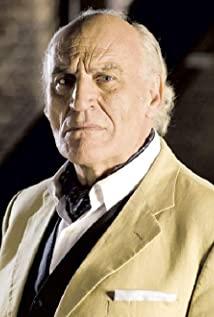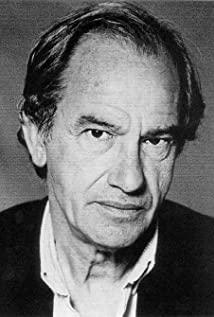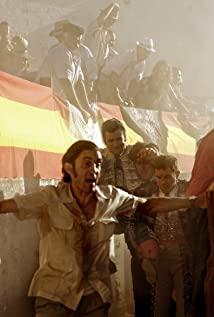This film really cannot be regarded as Goya's autobiography. The film seems to tell the story of a woman and a man through Goya's eyes. An innocent girl and a missionary with a deep sense of government were destroyed and withered in the turbulent era. Goya started as a royal painter at the court, and the royal family liked his early paintings very much. At that time, his paintings had neoclassical shadows, fresh and beautiful. But as an angry youth, Goya would not be satisfied with being a plaything for the powerful. In 1799, he began to make prints. Goya's prints can be said to be completely unflattering to the nobility. The most famous A Fine Teacher, The Sleep of Reason Produces Monsters, etc., all use extremely exaggerated and twisted methods to satirize the current ugly and irrational power. These prints are extremely uncomfortable to look at, the faces of the characters are distorted, and the two witches in A Fine Teacher are even more ugly: their bodies are wrinkled and their faces are hideous. Later, Goya is even more explicit that Neutta uses realistic techniques to depict scenes of blood and violence. In Great Heroism With Dead Men, the man's head and body are stripped away and hung on a branch, the scene is very scary. Looking back further, Saturn Devouring One of His Children is even more horrifying: a maniac with unidentified hair and messy hair is gulping down a child's mutilated body.
I have always felt that paintings should bring love and beauty to people. Such direct and explicit paintings are really not my style. But after watching this movie, I understand why Goya's paintings are like this. As a cynical and conscientious painter, Goya was in the court, but he always cared about the common people. At that time, Spain was ruled by the Carlo family, the nobles were reckless, the church was ruthless, and the common people were poor. In the film, missionary Lorenzo framed the little girl for believing in paganism because of her admiration for her beauty. Look at Goya's prints from this period: A Fine Teacher, everyone learns from witches, even if they make themselves ugly. And The Sleep of Reason Produces Monsters even blatantly criticized the church for abandoning reason and deceiving people with theology. The power of the middle class is constantly being oppressed by the church. Of course the church didn't like him, but Goya was a popular man around the emperor. It's a pity that the flowers never bloomed, the French Revolution brought the spring breeze of the revolution to Spain, the Spanish king was overthrown, and Napoleon's soldiers tried to destroy the old Spain. Goya, who hated the church so much at the time, had to see the invading French army brutally kill civilians. In the film, the little girl is finally released after the French invasion, and the middle class is finally free from the oppression of the church, but the little girl's family has already died: the contradictions of the church have been resolved, but the national disaster is on the horizon, and the life of the people is even more difficult. In the film, Goya is not like a protagonist, but a storyteller. In reality, Goya is also using his paintings to record his time and his country. He is full of sympathy and compassion but can only do nothing. So later Goya's paintings became more and more dark, more and more desperate, more and more distorted.
The director is really good at finding angles, and he doesn't fall into the cliché of ordinary biopics picking up leftovers from celebrities. The title of the film The Soul of Goya is actually quite good: The Soul of Goya's Paintings. Goya's creative process is shown from the perspective of Goya's paintings.
View more about Goya's Ghosts reviews



